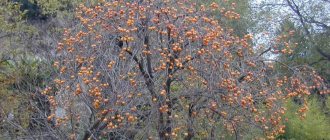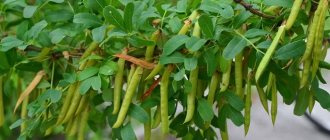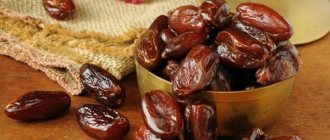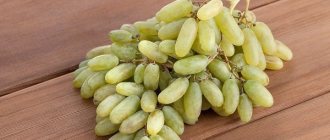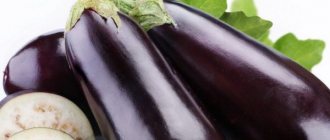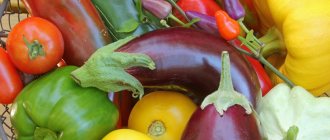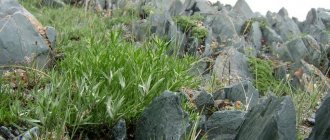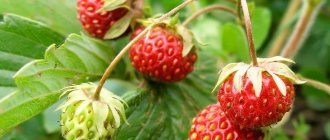Is there a seedless pomegranate?
Pomegranates have not yet been introduced completely without seeds - they still exist, but they are very soft and cannot be felt at all while eating. Bonus: sweet taste.
Scientists have been working on pomegranate selection for decades. There were many experiments with color; This is how brown, yellow and white fruits appeared on the shelves. But the development of an unusual variety of pomegranate with transparent, sweet seeds was a revolution in science and the food industry.
For the first time, seedless pomegranate was demonstrated in the United States, but the baton was immediately picked up by other countries. The new product was acclimatized in several countries by crossing with local varieties.
The answer to the question of whether there are seedless pomegranates is still negative. However, science does not stand still - perhaps soon such a species will appear, just as the seedless watermelon already appeared.
Composition and calorie content of seedless pomegranate
Seedless fruit grains, despite the difference in appearance and structure, have the same beneficial properties. This is due to the fact that they contain a whole complex of vitamins, minerals, macro- and microelements.
Pomegranate is beneficial for containing the following vitamins and active substances:
- B5;
- E;
- A;
- C;
- iodine;
- potassium;
- manganese;
- calcium;
- copper;
- silicon;
- iron.
All of the above is vital for a living organism, and a deficiency leads, at a minimum, to a weakened immune system. Seedless pomegranate can also demonstrate a rejuvenating effect due to its high content of antioxidants and tannins.
In terms of calorie content, the hybrid pomegranate outperforms the usual one. Compare: 100 grams of regular pomegranate contains 60 kcal, while seedless pomegranate has only 50.
Both types are considered dietary and are included in almost all popular diets. The acids contained in pomegranate promote the breakdown of fats, while saturating the body with substances necessary for life.
Features of use
Particular attention should be paid to the use of pomegranate seeds by young children, as well as pregnant and lactating women. During important periods of childhood, as well as childbearing and lactation, the human body is highly vulnerable and reacts sharply to the effects of biologically active substances in which the seeds of any plants are rich.
Pomegranate seeds are among the healthiest plant seeds
During pregnancy and breastfeeding
Pomegranates in general and pomegranate seeds in particular are very useful for pregnant women - in reasonable quantities, of course. The fact is that during the period of bearing a child, the expectant mother begins to feel an acute lack of vitamins and minerals necessary for the normal development of the fetus.
Pomegranate seeds with seeds are very useful for pregnant women
If there are no contraindications, pomegranates can ideally fill this deficiency for a pregnant woman, and their small seeds will play an important role:
- will strengthen and make the walls of blood vessels elastic, thereby ensuring normal blood supply to the embryo and preventing varicose veins in the expectant mother;
- normalize water-salt balance and metabolism in a woman’s body, thereby solving the unpleasant problem of swelling;
- cleanse the blood of toxins and cope with toxicosis in the first and last stages of pregnancy;
- stabilize high blood pressure, surges in which are especially dangerous during this period;
- mobilize the immune system to protect against infections.
Excessive indulgence in pomegranates during pregnancy and lactation can harm the mother and child.
You should not eat too many pomegranates during this important period - two to three per week is enough. Exceeding this norm can cause constipation, which is extremely undesirable for pregnant women. You should be careful when consuming this exotic fruit during lactation: your baby may experience allergic reactions. Therefore, a nursing mother needs to closely monitor its condition and start with just a couple of pomegranate seeds, gradually increasing the amount of product.
Is it possible to give pomegranate seeds to children?
Children under the age of two to three years should not be given pomegranate seeds: their digestive system has not yet fully developed, and the hard seeds can harm the child. Therefore, for such young children it is better to free the pulp of the berries from the seeds or make freshly squeezed juice.
It is too early to give pomegranate seeds to children under three years of age.
But the benefits of pomegranate seeds for a child’s body are very great - for example, with stomatitis and other inflammations of the mouth and throat. Washing and rinsing from a decoction of pomegranate seeds can also be used for children; preparing such a healing remedy is not at all difficult:
- Dried pomegranate seeds need to be ground into flour in a coffee grinder.
- Pour boiling water over a teaspoon of the resulting powder and heat for one to two minutes.
- Leave for half an hour and use as directed.
This simple and useful drug can not only treat a child’s sore throat or mouth ulcers, but also wipe areas of irritation on the skin. Due to its bactericidal, drying and astringent properties, the decoction effectively relieves inflammation and childhood dermatitis.
Pomegranates with seeds - excellent support for children's growth and development
After three years, children can already be offered whole pomegranate seeds, along with seeds. At first, little by little, literally a few berries once a week, then this amount can be constantly increased. Continue to give pomegranate seed powder - add half a coffee spoon of healing flour to yoghurts, milk, juices, honey. This treatment should be carried out two to three times a week - this is an excellent remedy for the prevention of anemia.
The benefits of pomegranate and its seeds - video
Variety and varieties
Since seedless pomegranate is a new plant, there are currently only two full varieties of seedless pomegranate commercially available:
- Spanish "Mollar de Elche". In Spain, it is already grown on a large scale; entire pomegranate plantations with fruit trees have been organized. Its fruits are large, weighing up to 800 grams, pomegranate peels are light red in color, dense and resistant to the external environment. The grains are sweet, with invisible seeds.
- American Wonderful. The color of the fruit is yellow and white, the grains are small, but soft and very sweet.
Both types of pomegranate are suitable for consumption in their original form and for making juice.
Due to the absence of seeds, seedless varieties produce on average 20% more juice.
Pomegranate trees grow in warm climates, but they are difficult to cultivate in the middle zone.
However, every year the climate becomes noticeably warmer, so gardeners are already beginning to experiment with growing pomegranates on their plots. Features of growing seedless pomegranate:
- The plant is unpretentious to the soil, but feels most comfortable on well-moistened sandy or rocky soil.
- Fruiting is possible in conditions of moderate air humidity, plenty of light and lack of wind.
- A tree is grown from a seedling. In open ground, pomegranate does not require special care, but it is covered for the winter and shaded from scorching rays in the summer.
- The most intensive watering is required during flowering to prevent the buds from falling off. When the fruits ripen, watering is reduced to avoid cracking.
- Seedless pomegranates turn out tastier if you feed the tree with organic and mineral fertilizers during the period of ovary formation.
- In the spring, formative pruning of branches is carried out, getting rid of small and dry branches. Leave 4-6 main shoots.
Pomegranate tree
The plant belongs to the genus of shrubs and small trees from the loosestrife family ⟮Lythraceae⟯.
It is also called the common pomegranate or pomegranate tree, and the fruits of the tree are usually called pomegranate or pomegranate.
This is a Russian name, borrowed from Latin - granatus, i.e. granular. In different states it is called differently. For example, in Rome it was called the “Punic apple.” The Romans were sure that the most delicious berries grew in the colony of Carthage. They called its Phoenician inhabitants Punics.
In nature, the pomegranate lives up to 50 years and reaches a height of 5-6 meters; in room conditions it grows by 1.5-2 meters. It has thin branches covered with thorns. The smooth, shiny leaves fall off in the winter. The plant really needs sunlight and warmth. In insufficient light it does not bloom.
The fruits are spherical, similar in size to an orange ⟮15‒18 cm in circumference⟯. The color of the peel can vary from yellow-orange to red-brown. Inside the pomegranate there are 1000–1200 seeds, tightly packed in 6–12 bins placed in 2 tiers. Each seed is enclosed in a juicy edible pulp.
There are 2 varieties of homemade pomegranate on the globe:
- Common ⟮Punica granatum L⟯.
- Socotran or protopunica ⟮Punica protopunica Balf⟯ – from the island of Socotra. It has pink flowers rather than the traditional red. The fruits are larger, but not as sweet.
Homemade pomegranate bears fruit very abundantly: 50–60 kg of fruit from one tree.
What does a pomegranate look like?
When uncut, it is impossible to distinguish a seeded pomegranate from a seedless one, especially a Spanish one. Possible signs are lighter, thinner skin that is soft to the touch. For this reason, seedless pomegranate varieties are transported carefully, in a container that will prevent external damage.
Peel off the outer skin of a pomegranate to reveal soft red or burgundy seeds inside. Judging by their sweetness and juiciness, they can be called a delicacy, especially since you can’t feel the pomegranate seeds at all while eating.
Some tips on how to properly peel and cut a pomegranate without damaging its structure:
- Use a sharp knife to cut off the top of the fruit so as not to touch the seeds.
- Make cuts in accordance with the white stripes. Here, too, you need to be careful so that the juice does not leak.
- Gently pull the cut part towards you. It will begin to separate from the fruit along with the grains.
- Separate the other pomegranate slices in the same way.
If you don’t want to cut a pomegranate, but you need to get the grains, there is the following way: cut off the “lid” of the fruit, make 4 cuts in the form of a cross along the fruit. Lightly press the center of the pomegranate with your hands, thereby dividing it into parts. Turn over and shake out the grains into a plate.
Does seedless pomegranate exist, benefits and harms, how to distinguish it, photo – Heating and heat supply
Almost not very long ago, American scientists cultivated seedless pomegranate. Eating the product has become much easier. But the good properties were completely preserved. At this time, the product has managed to expand throughout the world. In terms of taste quality, it does not differ at all from its ancestor.
What does a seedless pomegranate look like?
There are no significant differences in appearance between seedless pomegranates. At first glance, it is no different from other varieties of fruit. The peel is a little thinner and more tender. Because of this reason, transportation requires care, as the fruits are easily damaged. The membranes are hard and thick. They are white. What is unusual is that they contain many useful substances.
Harm of pomegranate without seeds
Seedless pomegranate is a fruit that can cause harm to health. Due to its acid content, it can irritate the mucous membrane of the digestive tract. Therefore, before use, pomegranate juice is first diluted with water.
It would also be a good idea to take it on an empty stomach. If the body has a tendency to constipation, pomegranate aggravates the problem. If consumed in excess, the fruit can corrode tooth enamel.
Contraindications for seedless pomegranate include:
- allergy;
- stomach ulcers and ulcerative colitis;
- period of worsening pancreatitis;
- very high sensitivity of tooth enamel;
- impaired intestinal motility;
- inflammation processes in the oral cavity;
- gastritis;
- age up to 12 years.
It is not advisable to eat the product if there are cracks or ulcers in the mouth. It can corrode the mucous membrane, which causes discomfort. People exposed to an allergic reaction should be especially careful.
Even minor rashes on the skin are a serious reason to refuse pomegranate. The next time you use it, you may develop Quincke's edema, which is life-threatening.
For this reason, it is especially scary to give children the opportunity to eat pomegranate in large quantities.
How to distinguish seedless pomegranate
Externally, the seedless pomegranate is paler in color. In most cases it may be yellowish. When pressed, the fruits can change, unlike other types of pomegranate.
Also, they are lighter in weight due to the absence of seeds. To avoid getting a poor quality product, you first need to inspect it for rot and damage.
Excessive softness of the peel indicates that the product is spoiled.
In stores, the type of fruit can be found on the price tag. At food markets, you can make sure that a pomegranate is seedless by testing it. Many sellers are willing to show a cross-section of the fruit. It would be nice to know where the fruit grew and when it was harvested. It must be remembered that the period of its development falls on September-October.
What are the benefits of seedless pomegranate varieties?
Let's consider the benefits and harms of seedless pomegranate. The fruit is recommended to be consumed in the following cases:
- Reduced immunity. Pomegranate helps to recover from exhaustion, increases the hemoglobin content in the blood, gives strength and tones.
- Colds and sore throat. Acts as an anti-inflammatory and antiseptic, pain reliever. Pomegranate juice is recommended for patients with bronchial asthma.
- Stagnation of urine or bile. Seedless pomegranate is an effective choleretic and diuretic.
- Desire to lose weight. Due to their low calorie content (especially juice), pomegranates fit into any diet menu. An additional effect is observed due to diuretic properties and acceleration of metabolism.
In addition, seedless pomegranate is often recommended as a supplement to treat cardiac conditions. The fruit lowers blood pressure, prevents the development of atherosclerosis, strengthens blood vessels, and saturates the blood with red blood cells.
Pomegranates are widely used in folk medicine. There are recipes based on juice, grains and even peel. It has been verified that beneficial substances are contained in all parts of the fruit. For example, the juice is used for kidney diseases to speed up the flow of urine.
But seedless pomegranate peel is especially popular in folk recipes. The crust is dried, then crushed into powder, which is used to treat enterocolitis. The powder perfectly heals wounds - just sprinkle it on the damaged area of the skin. And when diluted, it is used as a mouth rinse - it relieves bleeding gums and symptoms of stomatitis. Even an anthelmintic effect from pomegranate peel powder has been noted.
You can simply add it to tea - a proven preventive measure against colds.
How to clean it properly?
When purchasing such a tasty and healthy product, absolutely everyone is faced with the problem of cleansing it. Indeed, during such a procedure, the juicy burgundy grains begin to fly out and burst, splashing not only the hostess’s clothes, but also all surrounding objects. In this regard, experts recommend peeling a pomegranate as follows: to do this, make shallow cuts (crosswise) in the upper part of the fruit, and then take a bowl and fill it with cold drinking water. After this, you need to lower the pomegranate into the liquid and carefully peel the grains and all adjacent films. Using this method, you will not lose a single grain, and will also avoid the appearance of difficult stains on clothing and surrounding furniture.
Possible harm from consumption
The beneficial properties of seedless pomegranate are fully revealed only when consumed correctly. If you eat too much fruit in a day, you may experience nausea or indigestion.
The pomegranate fruit, like all fruits, contains acid that negatively affects tooth enamel. Therefore, you need to consume the product in moderation and do not forget to brush your teeth often. If your teeth are hypersensitive, then drink pomegranate juice only in diluted form.
Common Questions
The seedless fruit gained popularity not so long ago and is not familiar to many. For this reason, before purchasing it, questions arise regarding the taste and other nuances of consuming this “wonderful” berry.
Seedless pomegranate is a fruit crop that, in its beneficial properties and taste, is not at all inferior to the original pomegranate. The absence of seeds made the berry more convenient to eat and reduced the load on the gastrointestinal tract.
Relatively not so long ago, American scientists cultivated seedless pomegranate. Eating the product has become much easier. But the beneficial properties were completely preserved. To date, the product has spread throughout the world. In terms of taste, it is completely no different from its predecessor.

